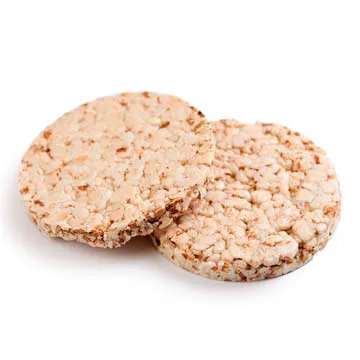
| Glycemic Index | Glycemic Load |
70.0
|
48.0
|
The glycemic index (GI) of rice bread equals to 70.0, which classifies it as a high GI food. The glycemic load (GL) of rice bread is equal to 48.0, which classifies it as a high GL food.
| Nutrition Facts | |
| Calories (kcal) | 306.0 |
| Carbohydrates (g) | 68.6 |
| Proteins (g) | 6.3 |
| Fats (g) | 0.7 |
100 grams of rice bread contain 306.0 kcal (1280 kJ), 6.3 grams of proteins, 68.6 grams of carbohydrates, and 0.7 grams of fats.
Rice Bread is a popular gluten-free alternative to wheat and other traditional grain breads. It’s made with cooked white or brown rice, providing complex carbohydrates and fiber that are important for overall health. Rice Bread has several nutritional benefits; it is naturally low in fat and calories, high in protein, and contains essential vitamins like B6 and iron. When eating Rice Bread as part of a balanced diet, some potential pros include an increased intake of dietary fiber which can help aid digestion while reducing the risk of certain diseases such as diabetes. Also due to its high content of healthy carbs, this type of bread may be helpful for weight loss/maintenance since it keeps you fuller longer without spiking blood sugar levels too drastically compared to processed grains found in most store bought products. However there are also cons associated with consuming Rice Bread regularly including being relatively low on nutrients when compared to whole grain varieties such as quinoa or rye because they don’t contain any nutrient-rich ingredients like nuts or seeds that could provide additional nutrition into your meal plan. Additionally depending on how much sodium is used during processing time this product can be quite high so looking out for lower sodium versions would benefit those who need to watch their daily salt intake closely.


